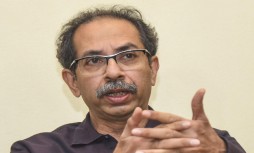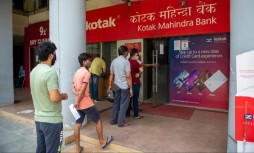Nitin Gadkari says toll system to end in India; here's what will replace it
March 29,2024
Union minister for road transport and highways Nitin Gadkari on Wednesday said that Centre is going to end the existing toll system in India and replace it with a satellite-based toll collection system.
Gadkari told news agency ANI that the money will be deducted from the bank account of people and the amount of distance covered by them will be charged accordingly.
On complaints of high toll taxes, Gadkari said that highways save time and fuel. "Earlier, it used to take 9 hours to travel from Mumbai to Pune, now it is reduced to 2 hours ..." he added.
In December last year, Gadkari had announced that the National Highways Authority of India (NHAI) plans to roll out the new system by March 2024.
Here's all you need to know about the satellite-based (or GPS-based) toll plaza system and the existing toll collection process in India:
What is a GPS-based toll plaza system?
As the name suggests, under this system, the NHAI will introduce toll collections that run on GPS technology. This means that drivers won't have to stop at plazas to pay toll charges. The toll instead will be deducted automatically from the bank account of vehicle owners.
How does the system work?
A GPS-based toll system will match the GPS coordinates of a moving vehicle to calculate the fee. The toll fee would automatically be deducted as the vehicle approaches a collection point. For the system to work, all vehicles must be fitted with the new number plates that can be directly monitored through satellites using GPS. The automatic number plate reader (ANPR) cameras installed on highways will recognise the GPS-enabled number plate of customers to deduct the money from their bank account.
What is the FASTag system?
Currently, the FASTag system is being used to deduct toll at plazas. FASTags were made mandatory for all four-wheelers from February 2021. It is an electronic toll collection system in which ‘Radio Frequency Identification’ (RFID) technology is used to make toll payments. The FASTag contains a small RFID chip that communicates wirelessly with toll booth readers. When a vehicle equipped with a FASTag approaches the booth, the RFID chip emits a unique 13-digit identification code, which is then captured by the toll booth reader. This code is linked to the vehicle owner's prepaid account, allowing for automatic deduction of toll charges.
Notably, during 2018-19, the average waiting time for vehicles at toll plaza was 8 minutes. With the introduction of FASTags, the time was reduced to 47 seconds.
Is the GPS-based system different from FASTags?
FASTags make toll payments electronic by using scanners at toll plazas, letting vehicles pass without stopping. With the GPS-based system, toll will be deducted using the ANPR technology based on distance traveled, making toll plazas unnecessary.
How does the toll tax work in India?
In India, the tolling is generally under an open system, wherein fee payable is a fixed amount based on the length of stretch under one project which is normally 60 kilometers. If a stretch is of lesser length, user fee of the actual length is collected.
The fee on a particular plaza is based on stretch length under that plaza, structures (bridge, tunnel, bypass) and width of the highways, applicable fee rules and provisions of the concessions agreement. It is also determined by the type of vehicles based on the size and load they carry.
What is the 60km toll rule?
As per the fee rules 2008, the spacing between two adjacent toll plazas should be 60 kilometers. The broad reasons for establishing fee plaza within a distance of 60 km are as under:
* Availability of land
* Availability of sufficient long line of sight for acceleration and deceleration zone.
* Municipal limit/Town area limit from the fee plaza being established.
* Location of bypass from the fee plaza being established.
* Location of major diversions on the National Highways.
* State boundaries and other check posts.
* Existence of a fee plaza on the section of NH and length of new section to be tolled is below 60 kms.
* Optimisation of revenue potential.
* To make the project viable, two fee plazas are established in a project section of NH within 60kms distance.
* The development work of the NH is considered as per requirements.
* Therefore, two adjoining sections constructed at different time in separate contracts having length of less than 60 kms may have the fee plazas within 60 kms.
* Distance between two adjacent toll plazas may be less than 60 km due to unavailability of land, traffic congestion or improper location etc.
How many toll booths are currently there in India?
Currently, there are over 1,000 toll gates in India.




















